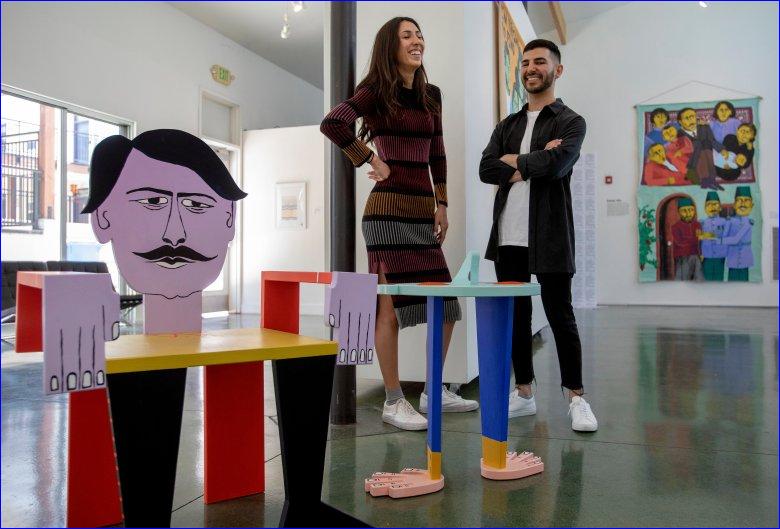


 Karl Mondon/Bay Area News Group)
Karl Mondon/Bay Area News Group)
"People don't connect the ancient to the present. They think Assyrians went extinct, but we're still here, creating art and thriving," said co-curator Nardin Sarkis.
Diaspora in Bloom: Assyrians in the 20th Century & Beyond at the Art Ark Gallery in San Jose was curated by Sarkis and Akadina Yadegar, two Assyrian-American millennials and San Jose natives who wanted to see more of their own cultural art celebrated in gallery spaces.
"In general, Assyrians tend to concentrate on our ancient history. So we wanted to focus on the present experience," Yadegar said, including a recent history of mass migration and fleeing war.
Assyrians -- an ethnic group descending from the ancient Assyrian empire in what is now northern Iraq and parts of Syria, Turkey and Iran -- still largely live near their ancestral homeland, but many have moved to neighboring countries to escape war and persecution, most recently from the Islamic State.
There are more than 100,000 Assyrians in the United States, according to 2017 U.S. Census estimates.
Artist Esther Elia tackled themes of loss, trauma and identity in a series of paintings and sculptures. A set of brightly colored furniture called "Heirlooms" depict portraits of Elia's grandfather and great-grandparents and tells the story of her family's escape from Iran in 1919, when they were forced to leave all their possessions behind.
Lacking her own family heirlooms, Elia created her own.
"Everyone dies, and their knowledge dies with them. Their kids try and remember. 'Why didn't I ask questions?' " Elia writes in her description of the piece. "I am forced to make my own heirlooms."
Elia's paintings illustrate important moments in her family's history, as a way to reconstruct her own identity.
One of Elia's paintings, "Swear you're not hiding Christians?" depicts her family hiding in a cluster upstairs from Ottoman soldiers during the Assyrian genocide in 1916. Below, a Muslim neighbor swears on a Quran that he is not hiding Christians.
"In this day and age when we're taught to shun others, these two groups are protecting each other, as neighbors," said Sarkis of the piece.
Other artists give fresh takes to traditional Assyrian motifs.
The calligraphy work of Atra Givarkes uses the Assyrian alphabet to create compositions that honor the history of the neo-Aramaic language and represent hope for its survival.
Rabel Betshmuel, an artist from Chicago, interpreted satellite photos of Assyrian land into a series of geometric watercolor paintings featuring bright colors and elements from ancient Assyrian reliefs, such as the lamassu, a deity with a human head, the body of a bull and bird wings.
"He's reinforcing our strong ties to the Assyrian land," Yadegar said.
Diaspora in Bloom
Where: Art Ark Gallery, 1035 S. Sixth St.
When: 6-9 p.m. June 7, 8 and 14 and noon-4 p.m. June 9 and 15
Admission: Free.
Additional: On June 8, the gallery will feature performances from local Assyrian-American artists.

or register to post a comment.